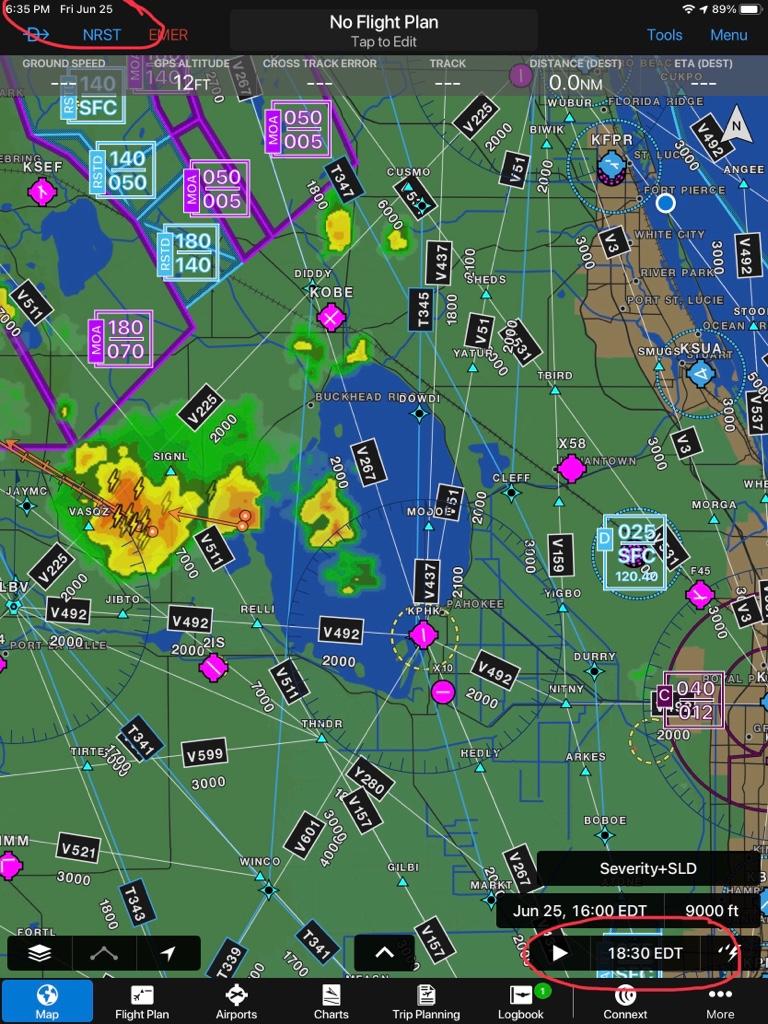LanceS
Pre-Flight
The other day I flew TOP->NEW dealing with both a frontal line and the usual pop-up T-storms. My flight path looks like a drunken sailor was flying the airplane, with multiple deviations and at one point doing a 180 and landing at ADF to wait out a line to break up. My son slept most of the way in the back, we remained in VFR conditions nearly the entire time, and I could’ve had a full cup of coffee on the dash and not spilled a drop because the ride was so smooth. The key is flexibility in planning, having good communication with ATC, always leaving yourself an out, not flying into the buildups, and being willing to turn around and wait it out if necessary.








